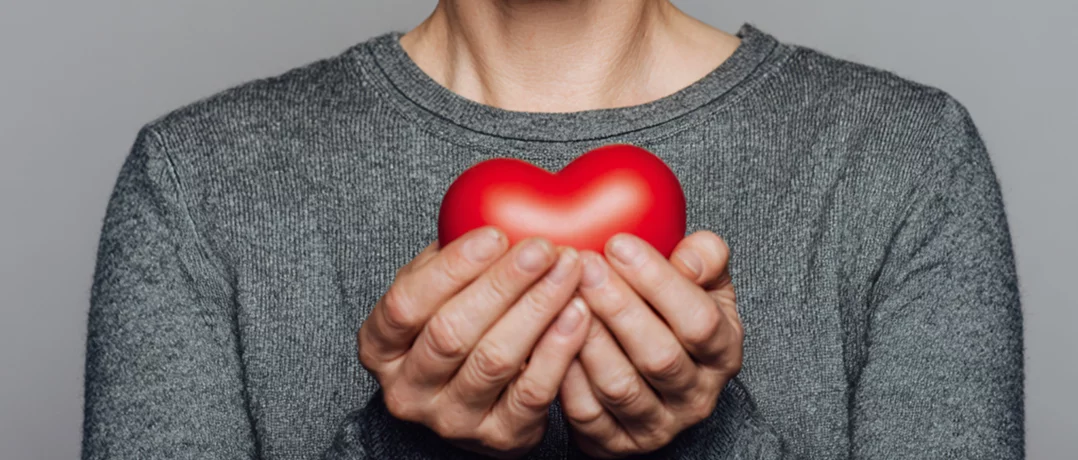Heart disease is falsely considered as a man’s problem. After menopause, a woman’s risk rises considerably. Yet, many women still ignore the symptoms, and medical teams still underdiagnose it.
After menopause, women are at higher risk of heart disease
After menopause, women are at higher risk of heart disease


Carla was 47 when she started feeling persistent stomach pains. She ignored them, assuming it was a digestive problem. Or maybe stress. When her doctor diagnosed a heart condition, she was shocked. No woman in her family had ever had heart trouble. She tries to keep a healthy lifestyle, combining regular exercise with a balanced diet. And she’s a woman. Weren’t women supposed to be less at risk of heart disease than men?
This is true until menopause. From that point on, women’s risk of cardiovascular disease (CVD) increases significantly. Yet it often goes underdiagnosed, largely because it can be silent. “Heart disease kills women more than breast cancer,” Professor Zeina Kadri, cardiologist, specialized in echo and intensive care, points out. “It is responsible for 25% of deaths in women under the age of 65, and 33% over that age. A rate comparable to that seen in men.”
The reason is simple.
Before menopause, women are protected by estrogen, which has a beneficial effect on cholesterol and the arteries, Kadri added. A similar effect is also seen in women who take hormone replacement therapy after menopause. In those who don’t, the risk of heart disease is similar to that observed in men
Other factors, like family history and comorbidities, such as high cholesterol level, diabetes, and high blood pressure, further add to the risks.
Underdiagnosed and undertreated
For Kadri, the real concern about CVD in women goes beyond the increased risk after menopause. It lies in how the disease behaves and in its treatment. “In women, CVD is more silent than in men,” she said. 20% of women who suffer a myocardial infarction (MI) don’t experience chest pain. And we still don’t understand why. And even when they have pain, women, unlike men, don’t seek promptly medical advice.”
According to a study published by the British Heart Foundation, “women are 50% more likely than men to be given an incorrect diagnosis following a heart attack.”
“Inaccurate diagnosis leads to higher mortality,” Kadri added.
This is also true for undertreatment, which is too common in women with CVD. “For some reason, even in developed countries, women with MI are often undertreated,” she noted. “They are not given the full range of recommended medications, mainly aspirin, statins, and beta-blockers.”
Women are also less likely than men to undertake catheterization, and they don’t receive adequate convalescent care
Heart conditions specific to women
On top of that, women experience certain heart conditions differently to men. They are more affected by Myocardial Infarction with Non-Obstructive Coronary Arteries (MINOCA), a type of ischemia that occurs despite normal coronary arteries on an angiogram. “MINOCA accounts for 30% of CVD cases in women,” Kadri emphasized. “This condition affects the small blood vessels and is caused by microvascular dysfunction.”
“Women also experience more coronary vasospasm, a temporary and sudden narrowing of coronary arteries,” she added.
Spontaneous Coronary Artery Dissection (SCAD), a condition characterized by a tear in the wall of a heart artery, is another cardiovascular issue specific to women. “This pathology is common in women in their 40s,” she explained. “To this must be added the peripartum cardiomyopathy, a pregnancy-related condition. After childbirth, the heart muscle can lose up to 70% of its function.”
In the last two decades, a new heart disease in women has been described: Takotsubu or broken heart syndrome. “This medical condition is very rare and can occur when a woman goes through intense emotional or psychological stress,” Kadri said.
The heart normally recovers within a week following the stress. However, in 30% of cases, Takotsubu can be deadly
Prevention
For all these reasons, women must be aware of the symptoms, and of the importance of prevention. “In 20% of cases, MI in women is silent, Kadri stated. Thus, they should not ignore any pain in the chest, epigastric stomach, or lower jaws, especially if it occurs during physical exertion. Even eructation can sometimes be an indicator of a heart disease.” Kadri added: “If a woman is diabetic, she should undergo a stress test even if she doesn’t feel any pain, because people with diabetes don’t feel the symptoms of a heart attack in the same way as others. This problem is exacerbated in women.”
As for prevention, Kadri stressed that “women, like men, should undergo routine blood tests and manage the risk factors, obesity, high blood pressure, high cholesterol, and diabetes.” “They should also adopt a healthy lifestyle, combining a balanced diet with regular exercise. The World Health Organization recommends at least 150 minutes of workout per week. Women who have never been physically active should take up exercise at the onset of menopause and increase the intensity over time.”
Kadri concluded: “Women should think about themselves. If they feel a slight pain, they should not ignore it because they don’t have time or because they are overwhelmed by their household chores. They must seek medical advice as soon as possible."
Nothing is more important than their health

